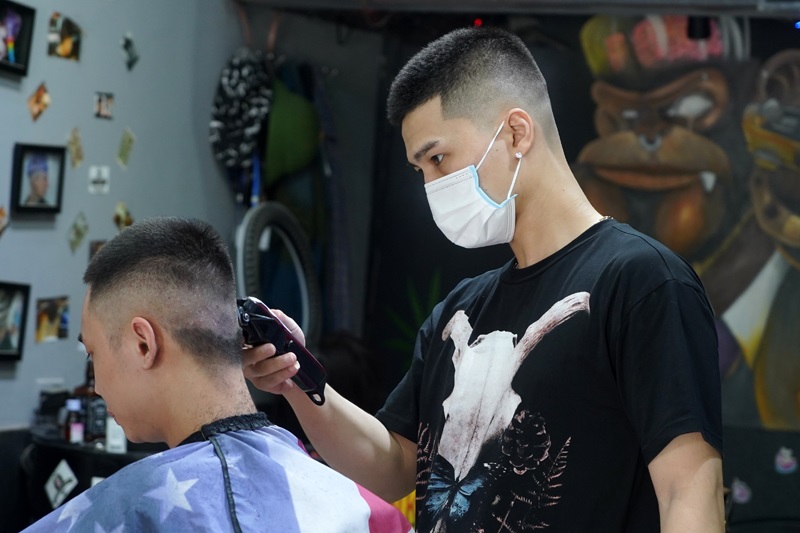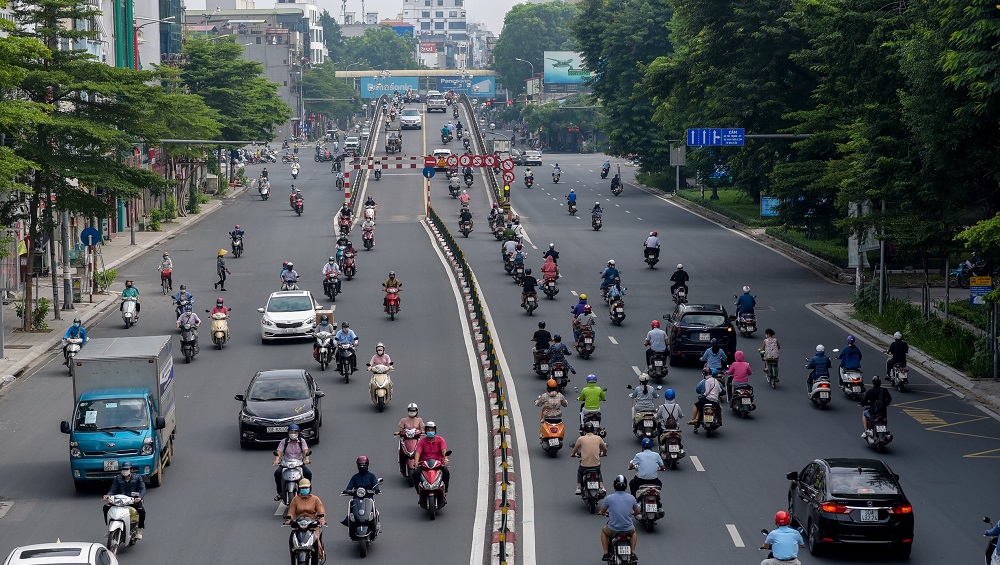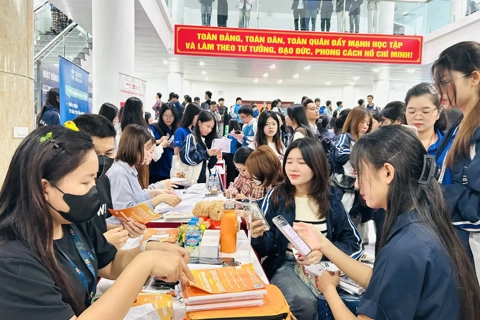Hanoi relaxes restrictions, allowing takeaway after two months of shelter-in-place
Hanoi allows the resumption of some essential services and the gathering of fewer than 10 people in the public.
Food takeout, barbershop, and some other essential services in Hanoi today reopened as the city relaxed restrictions after nearly two months of the stay-at-home orders.
| A barbershop resumes working. The photo was taken on Sept 21 by Pham Hung/ The Hanoi Times |
Facilities supplying necessities like supermarkets, wet markets, convenient stores, groceries, veggies, and fruit shops are subject to relaxation, together with drug stores, medical equipment retailing shops; healthcare services; banks, treasury offices, securities, and businesses working in the finance-banking sector; post and telecommunications; transportation and activities supporting export; rehabilitation and social welfare facilities; vehicle repair and washing services; home appliances shops, among others.
Stationaries, construction material supply, and activities relating to e-commerce are also included in the list.
From Sept. 21, the resumption of essential services is in line with Directive 15, which stipulates less restrictive social distancing requirements than the measures taken in the past two months, and some specific measures until the city completes inoculating the second jabs to all eligible people, according to the document signed late Sept 20 by the city’s mayor Chu Ngoc Anh.
Under Directive 15, people are not allowed to hold any gathering activities and events of more than 20 people in a room; gather in a group of 10 people or more outside of the office, school, and hospital premises; hold any religious ceremony or activity with 20 people or more at any cultural sites; organize any culture, sport, and entertainment event at public places; conduct any business services, except the provision of essential goods and services.
State agencies, offices, enterprises, and corporations (except for central agencies, armed forces, anti-pandemic forces, foreign diplomatic missions, and international organizations) need to halve their payroll working in offices, the other half works from home.
Ride-hailing shippers are allowed to work on the condition that they are vaccinated with at least one shot.
| Traffic in Hanoi's downtown on Sept 21. Photo: Khanh Huy/ The Hanoi Times |
Transport
To manage traffic flow toward the city, Hanoi maintains 22 checkpoints at the entrances and more than 30 checkpoints to monitor the inflows of people from surrounding areas coming to Hanoi.
The local government requested the Ministry of Transport to continue suspending domestic commercial flights and passenger trains to Hanoi. Inter-provincial buses also remain halted.
In addition, intra-city mass transit networks are not subject to resumption.
Notably, grassroots authorities need to isolate affected areas as narrow as possible to mitigate the impact on people’s lives while maintaining testing in very high-risk zones.
From Sept. 21, Hanoi required no travel permit and stops labeling “green zone” (safe areas), “yellow zone” (high-risk, and “red zone” (very high-risk) based on safety levels like before.
Hanoi has undergone four extensions of the shelter-in-place order under Directive 16 except for emergencies and the purchase of drugs and food.
In the ongoing outbreak that flared up in late April, the city has confirmed more than 4,000 cases.













